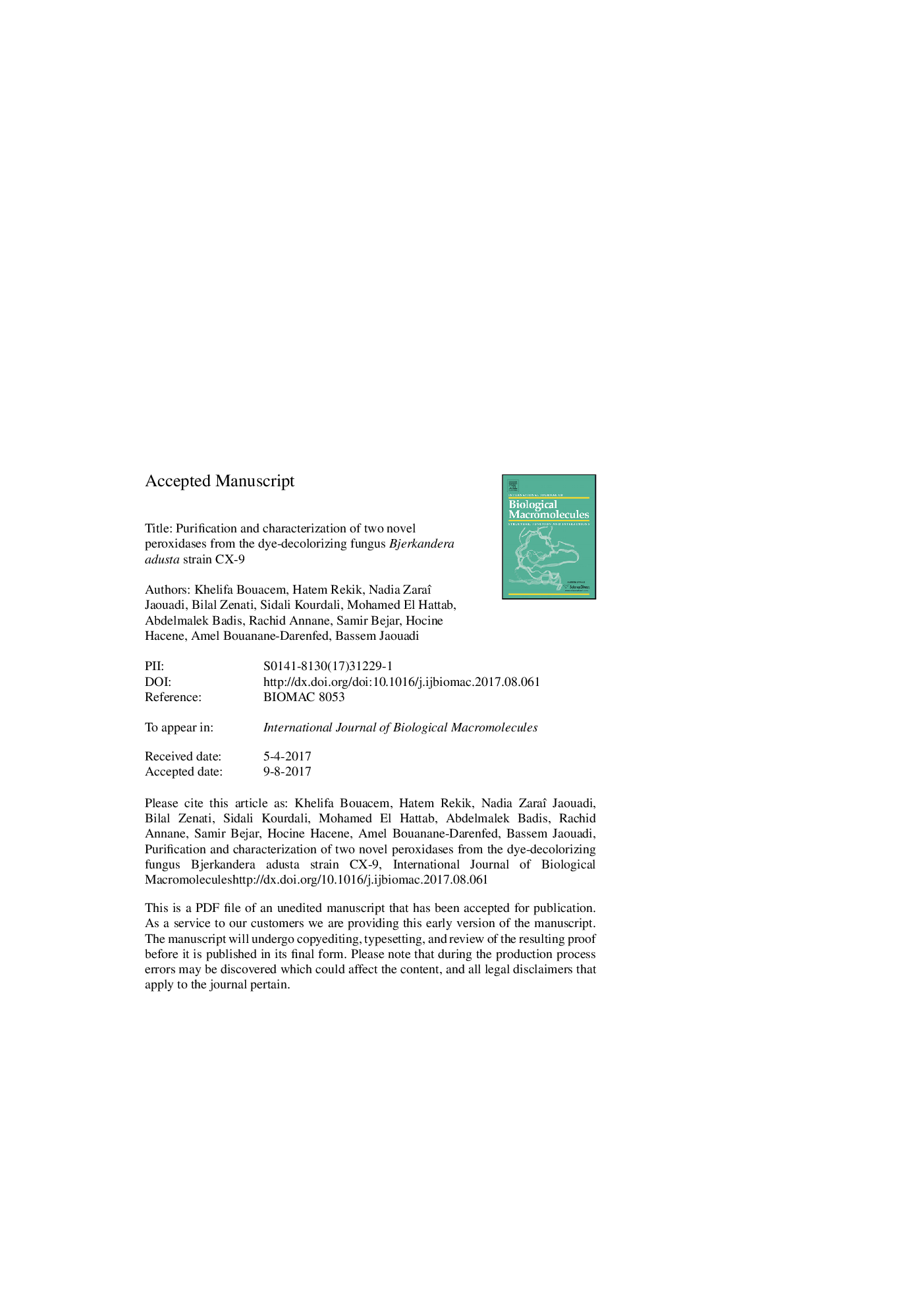| Article ID | Journal | Published Year | Pages | File Type |
|---|---|---|---|---|
| 8329224 | International Journal of Biological Macromolecules | 2018 | 39 Pages |
Abstract
Two extracellular peroxidases from Bjerkandera adusta strain CX-9, namely a lignin peroxidase (called LiP BA45) and manganese peroxidase (called MnP BA30), were purified simultaneously by applying successively, ammonium sulfate precipitation-dialysis, Mono-S Sepharose anion-exchange and Sephacryl S-200 gel filtration and biochemically characterized. The sequence of their NH2-terminal amino acid residues showed high homology with those of fungi peroxidases. Matrix assisted laser desorption ionization-time of flight mass spectrometry (MALDI-TOF/MS) analysis revealed that the purified enzymes MnP BA30 and LiP BA45 were a monomers with a molecular masses 30125.16 and 45221.10 Da, respectively. While MnP BA30 was optimally active at pH 3 and 70 °C, LiP BA45 showed optimum activity at pH 4 and 50 °C. The two enzymes were inhibited by sodium azide and potassium cyanide, suggesting the presence of heme-components in their tertiary structures. The Km and Vmax for LiP BA45 toward 2,4-Dichlorolphenol (2,4-DCP) were 0.099 mM and 9.12 U/mg, respectively and for MnP BA30 toward 2,6-Dimethylphenol (2,6-DMP), they were 0.151 mM and 18.60 U/mg, respectively. Interestingly, MnP BA30 and LiP BA45 demonstrated higher catalytic efficiency than that of other tested peroxidases (MnP, LiP, HaP4, and LiP-SN) and marked organic solvent-stability and dye-decolorization efficiency. Data suggest that these peroxidases may be considered as potential candidates for future applications in distaining synthetic-dyes.
Related Topics
Life Sciences
Biochemistry, Genetics and Molecular Biology
Biochemistry
Authors
Khelifa Bouacem, Hatem Rekik, Nadia Zaraî Jaouadi, Bilal Zenati, Sidali Kourdali, Mohamed El Hattab, Abdelmalek Badis, Rachid Annane, Samir Bejar, Hocine Hacene, Amel Bouanane-Darenfed, Bassem Jaouadi,
